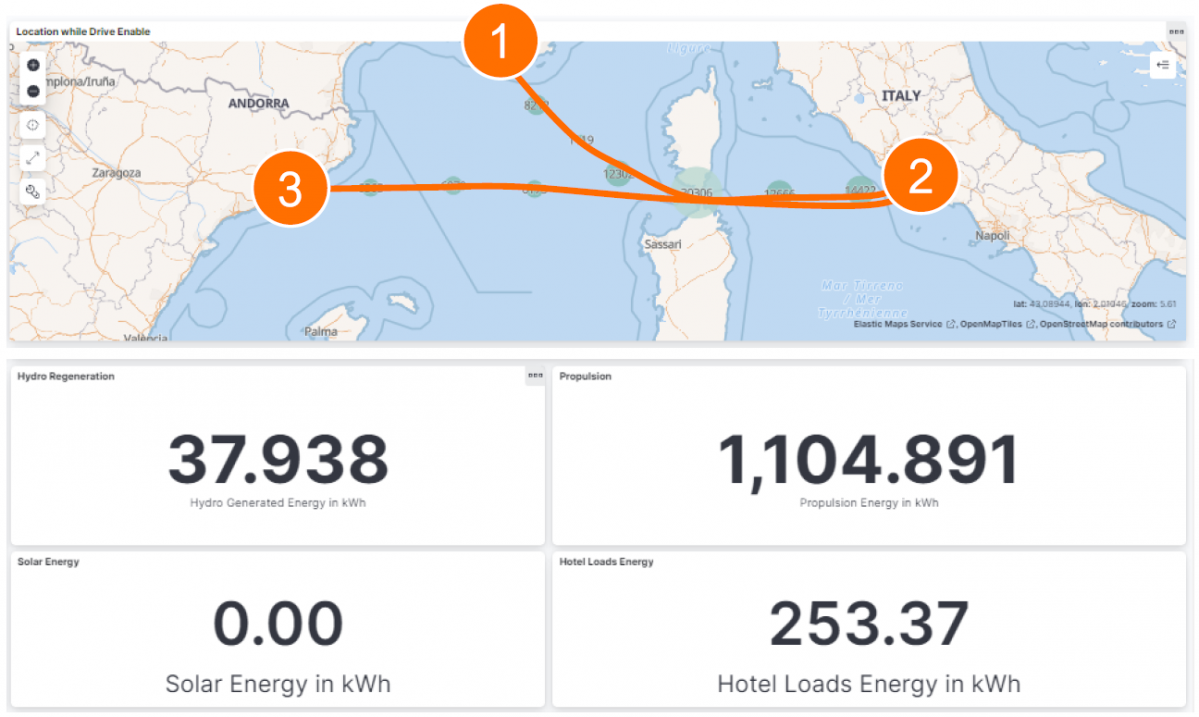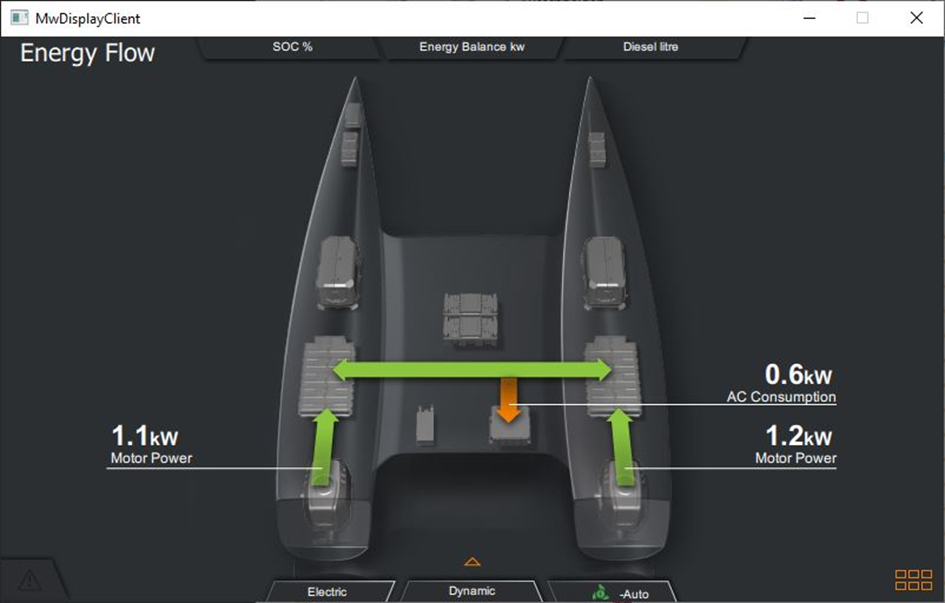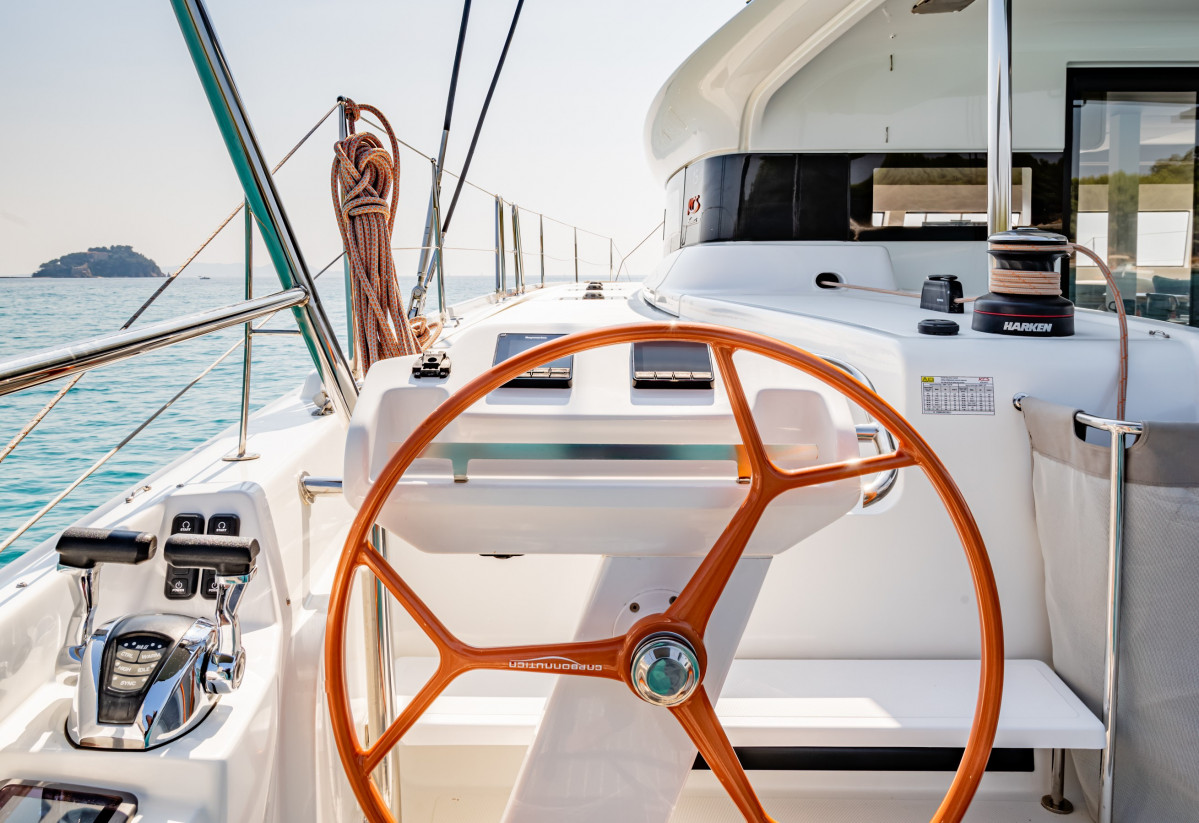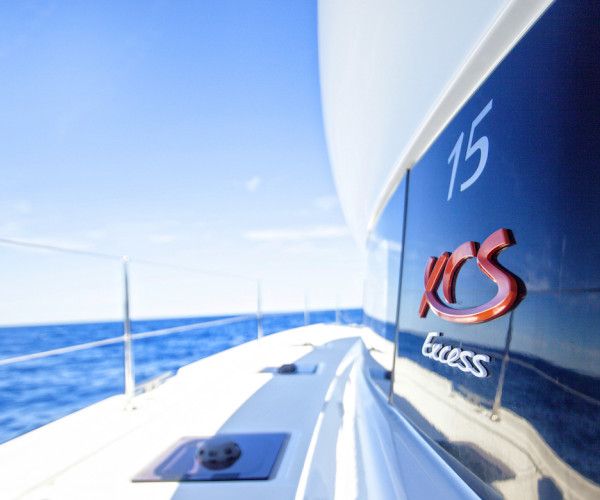E’LAB #4 Energy management

Following the recent boat shows this past fall at Cannes, Rome and Barcelona, our Excess 15 E'Lab has now completed a decent Mediterranean circuit, enabling us to gather even more information.
In addition to the propulsion system, an energy management system is an integral part of all hybrid drivetrains. The tour was therefore an opportunity for our crews to work with Torqeedo's technicians and learn how to manage on-board energy consumption. The two-week offshore trip was quite significant (about 800 miles), testing not only the electric propulsion over long distances, but also checking the consumption of all electrically operated navigation and living equipment on board, meaning just about everything except the cooktop.

One of the things specific to the hybrid drivetrain is having a reserve of energy for the service power that’s easily renewable, thus abundant. During the two weeks under way, the average daily expenditure of service energy totaled 18 kW. Converting this power to amperes, it represents 750 A at 24 volts and 1,500 A at 12 volts, which would represent the consumption of a larger and more luxurious boat than the average in our range.
Recharging is done by the generator, on the one hand, but also by the propulsion batteries and this in silence. The 80 kWh at 360 volts of the BMW i3 batteries feed, via an inverter, the 10 kWh at 24 volts of the house batteries. The recorded consumption corresponds to almost two recharges in 24 hours of this battery bank. Centralized energy thus provides a significant gain in power for comfort use, but becomes more sensitive to manage in order to limit the consequences on the propulsion range. When the diesel tanks are getting down to their lowest levels, this energy expenditure must be very carefully monitored.

ENERGY MANAGEMENT INTERFACE
The Torqeedo hybrid system, which is mounted on our E'Lab catamaran, has a central brain that is able to monitor all energy consumption and supply at any time and, depending on the chosen settings, to control the switching-on or shutting-off of certain equipment. The control panels are interfaced with the touch screens, the helm station consoles or the chart table, allowing you to switch from your navigation screens to the management system of your hybrid chain in the blink of an eye.

These screens allow you to control and monitor all your on-board consumption, whether propulsion or service (navigation and domestic) but also charging, whether it comes from the generator, solar panels or hydrogeneration. Depending on the setting initially entered, it calculates, according to the instantaneous energy expenditure, the right moment to start the generator automatically. For example, in comfort mode, the generator is fired up so that the charge state never falls below 50%. If you maintain speeds higher than 7 knots (consuming around 20 kW) it will start after two hours, while if you are doing 5 knots (10 kW) you will have five or six hours ahead of you without any noise. By browsing the menus, all the consumption on board including the 220-volt network can be viewed. This information is crucial for adapting your lifestyle to suit the conditions you encounter. Simply turn on or off any one item of equipment to instantly assess its impact on consumption. Very cloudy weather or a flat calm sea are circumstances that will encourage greater sobriety in energy consumption, by easing off on the use of the electric winches for example. On the other hand, on great weather, with wind and sunshine, you’ll get the opposite effect, and the screens will be there to confirm it.

In recent years, our cars have been equipped with on-board computers that calculate instantaneous consumption and indicate the remaining distance that can be covered at that speed. In combination with an econometer, these devices have made us drive in a more fuel-efficient manner.
With the Torqeedo energy management interface, we can do the same, as one of our skippers explains very neatly in his testimony about the possibilities of this management system:
“One of the great advantages of the hybrid system developed with Torqeedo is the instantaneous view of the energy flow on board.
In addition to the propulsion management, the software created by Torqeedo also offers a precise view of the consumption or production of non-propulsion components. For example, the occasional use of solar panels, the consumption of a refrigerator, or the use of an electric winch are integrated into the system and interpreted by the software.
This means that we can not only manage the propulsion (range, speed, charging, etc.), but also optimize all the parameters on board to enjoy less energy-consuming cruising. And this can be applied both under way and at anchor. One story that illustrates this point nicely happened during one of the E'Lab delivery trips:
The boat was under sail in a strong wind, and therefore in regeneration mode with a high output. However, the software detected that, at times, consumption was exceeding the charging rate...
We were able to identify that the 12V/220V inverter linked to the water heater hadn’t been switched off, and that it started (with its high induced consumption) as soon as the water in the calorifier dropped in temperature.
It was easy to turn off this inverter for the day we were under way, and to only switch it back on again in the evening to enjoy a nice hot shower... and full batteries!
This instantaneous vision of your energy balance, in addition to the correction of this kind of minor omission, quickly becomes like a bit of a ‘game’.
When you can see and quantify the impact of each area of use, you immediately feel like trying other alternatives: What happens if I reduce the air conditioning by one degree? What if I move forward on my anchor with the motor instead of the windlass? What if I luffed up a little to improve the regeneration? Conversely, should I bear away to better orient the solar panels...?”

IN CONCLUSION
The Torqeedo hybrid system installed on our E'Lab has an impact on propulsion, but we found that it has “revolutionized” the vision and management of energy on board: What formerly might have been a vague concern can now become a clear factor, having an impact on our behavior...




Thanks for your sharing valuable information and data regarding the electric propulsion system. I am not really a tech-savvy person, and do neither have highly technical questions nor comments. But, if I may, as a potential customer of the system for 15, I would like to share my personal wants about the system specs and others for your consideration.
100% electric: 2+ hours at 8+ knots would be preferable. Max 10+ knots.
Price: Approx. OK with 100-120K euros, which would be approx. 10%-12% of the average sales price, assuming the costs of batteries, panels and others are gradually dropping every year until the hypothetical launch of the system in 2023/4. Understand it depends on the order units and the take rate of the system and off-course the lower the better, though. 150k euros would be quite challenging.
Weight: 900-1000KG, which is approx. additional 5+%, would be acceptable.
Propellers: 1 knot drop would be acceptable for hydrogen generation either by folding or fixed.
Solar panels: Need the panels not only over the davits, but also on the roof. They should be non-slip panels robust enough for busy mainsail work by a couple of heavy crews.
Upgrade: The energy management software should be upgraded free via a PC or a tablet. Want charged upgrade programs for panels and others for the time when new generation technologies/products are launched in the future.
Finally, I am highly looking forward to hearing from you about the progress of your test and development.
Best,
Hiroshi
Thank you for you contributions to the Lab and let's keep exchanging on this platform to see these projects come to life, hopefully in a very near future.